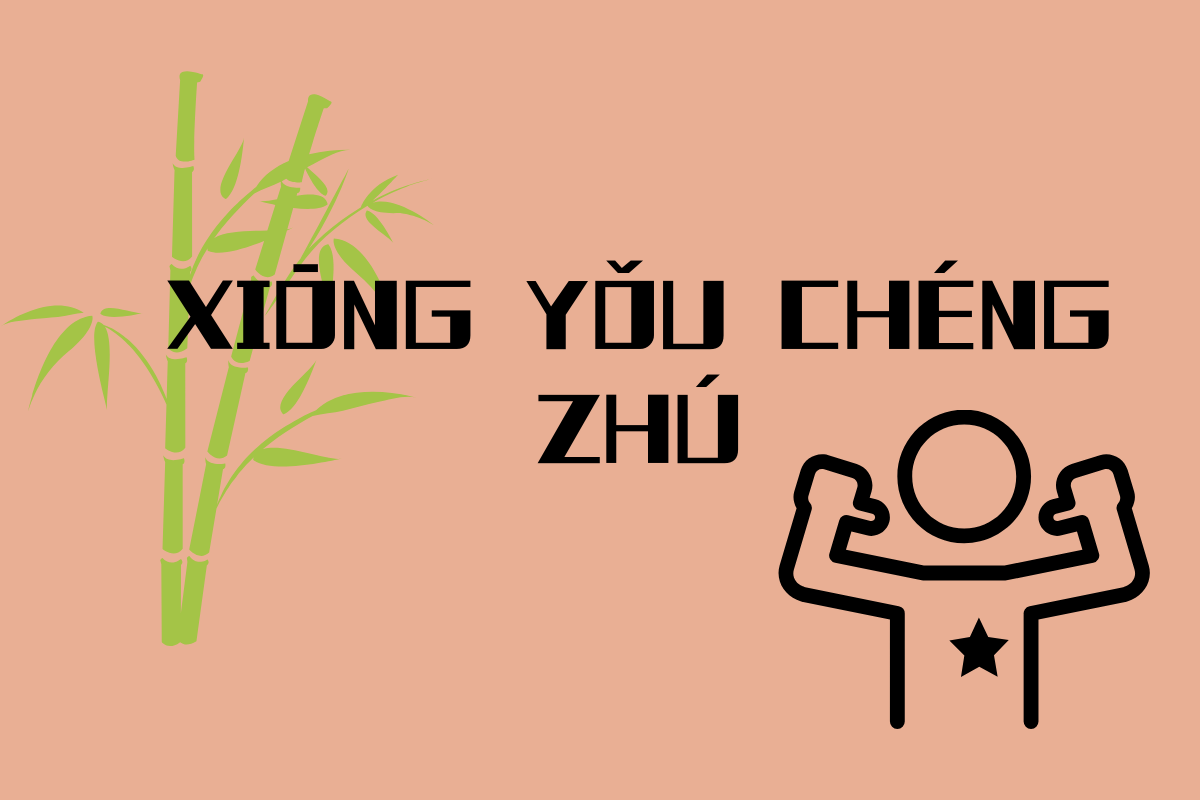Having a Well-Developed Plan-胸有成竹 (xiōng yǒu chéng zhú)
In the realm of Chinese idioms, 胸有成竹 (xiōng yǒu chéng zhú) is a gem that beautifully encapsulates the essence of being well-prepared and confident in one's abilities. Literally translated, it means"having a bamboo in one's chest," but its true meaning extends far beyond its literal interpretation. This idiom is a testament to the Chinese culture's emphasis on foresight, preparation, and the power of a calm, collected mind.

Origin
The origin of this idiom can be traced back to ancient China, during the Tang Dynasty (618-907 AD). It is attributed to a famous calligrapher and painter named Wang Xizhi(王羲之), who was known for his exceptional skills in both calligraphy and painting. Legend has it that Wang Xizhi was once asked to paint a picture of a bamboo for a friend. Instead of hurriedly picking up his brush, he spent a significant amount of time studying bamboo, understanding its essence, and appreciating its characteristics.
One day, as he was walking along the riverbank, he observed a grove of bamboo swaying gracefully in the breeze. He realized that to capture the true essence of bamboo, one needed to not only observe it but also 理解 (lǐ jiě) understand it deeply. Only with this understanding could one paint it with grace and precision. With this insight, he returned home and painted a bamboo masterpiece with ease and confidence.
理解 (lǐ jiě) is a Chinese vocabulary word that means to comprehend, grasp, understand, or perceive. It signifies having a clear understanding or insight into information, thoughts, concepts, or viewpoints.
Example:
I understand what you mean, and we can work together.
我理解你的意思了,我们可以一起工作。
Wǒlǐjiěnǐde yìsi le,wǒmen kěyǐ yìqǐ gōngzuò.
Please explain it again; I haven't fully understood yet.
请你再解释一遍,我还没有完全理解。
Qǐng nǐzài jiěshì yíbiàn, wǒhái méiyǒu wánquán lǐjiě.
Meaning
胸有成竹 (xiōng yǒu chéng zhú) conveys the idea of being thoroughly prepared and having a well-thought-out plan in advance. It reflects the importance of having a clear strategy and a sense of assurance in one's abilities, much like Wang Xizhi's confident brushwork when painting bamboo.
Who is Wang Xizhi?
Wang Xizhi(王羲之), often referred to as Wang Xianzhi, was a renowned Chinese calligrapher and painter who lived during the Jin Dynasty(approximately 303-361 AD). His impact on Chinese calligraphy is immeasurable, and he is considered one of the most revered calligraphers in Chinese history.
Background (背景 bèi jǐng): Wang Xizhi was born into a family of scholars and calligraphers in Linyi, Shandong Province. His father, Wang Xian(王羡), was also a skilled calligrapher, and he began teaching Wang Xizhi calligraphy from a young age.
Achievements (成就 chéng jiù): Wang Xizhi's calligraphy was celebrated for its grace, balance, and elegance. His most famous work, the "Lan ting ji Xu"(兰亭集序), or "Preface to the Poems Collected from the Orchid Pavilion," is considered a masterpiece of Chinese calligraphy. This work is known for its flowing and expressive brushwork, as well as its exquisite use of ink and paper.
Key Sentences:
He approached the interview with a well-researched plan,demonstrating having a bamboo in one's chest
他准备充分的面试,展现出了胸有成竹。
Tā zhǔnbèi chōngfèn de miànshì, zhǎnxìan le le xiōng yǒu chéng zhú.
He had all the answers off pat.
所有的答案他都胸有成竹。
suóyǒu de dáàn tā dōu xiōnɡ yǒu chénɡ zhú。
His detailed presentation showed that he had a plan and with a bamboo in one's chest.
他详细的演讲表明他有一个计划,胸有成竹。
Tā xiángxìde yǎnjiǎng biǎomíng tāyǒu yīgè jìhuà, xiōng yǒu chéng zhú.
Do you 胸有成竹 (xiōng yǒu chéng zhú) have a confident grasp of learning Chinese? With the guidance of a skilled teacher and effective methods, your progress will surely be accelerated. You are welcome to experience our one-on-one courses.